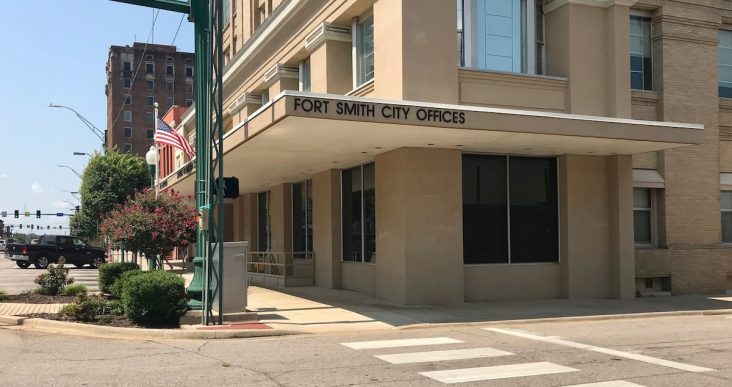Fort Smith indoor sports facility feasibility study could be ready by February
by November 10, 2021 5:16 pm 1,448 views

An indoor sports facility could be a huge economic boost for the city of Fort Smith, but the prospect would come with a hefty price tag.
Bill Krueger, principal of Convention Sports & Leisure International (CSL), told the Fort Smith Board of Directors during a study session Tuesday (Nov. 9) that he will spend the next three to four months conducting a feasibility study on the prospect of an indoor sports facility in the city. That study will look at economic impact, strategic planning, market feasibility, financial analysis, funding possibilities, design and more.
After the study is completed, CSL will give an honest opinion of whether or not an indoor sports facility will be a benefit to the city, Krueger said.
“We don’t just tell cities what they want to hear. We will tell you if it doesn’t make sense,” Krueger said.
After receiving Arkansas Tourism matching grant funds of $15,000, the city hired Conventions, Sports & Leisure on Sept. 30 to conduct a feasibility study on the arena for a cost not to exceed $30,000. The Fort Smith Advertising & Promotion Commission approved $7,500 toward the feasibility study in April. The Fort Smith Board of Directors approved the city’s half of the $15,000 needed for the matching grant in May.
At the time the A&P Commission approved the funding, Jacobsen said the Fort Smith Convention Center has the capacity for meeting, feeding and breakout sessions or meeting, feeding and exhibits. An indoor sports facility could add to that by allowing the meeting, eating and breakout session at the convention center while exhibits could be at the other facility, or other combinational use of the two facilities, which could work to bring bigger conferences to Fort Smith, he said. The facility could be used for basketball, volleyball, concerts, weddings and much more.
Krueger said industry trends show it is critical to have multiple courts, fields and playing surfaces in one location in order to achieve maximized sports tourism. There also needs to be flexibility to accommodate the widest variety of uses. Ideally a facility would include food courts, cafes and locker rooms and have the ability to reconfigure seating and court size to adjust to many types of collegiate, high school and youth tournaments.
The typical facilities are public owned with a public/private partnership to manage the facility. Such a partnership would allow the city or public entity to set certain criteria they think is most important, like certain days when the amenities would be open to the public, Krueger said.
Another important aspect is to make certain there is plenty of land available for not just the facility but amenities, such as restaurants and hotels, that can come in once the facility is built, he said. Though the actual facility would only need about 15 acres for the building and parking, ideally, there would be about 100 acres for the facility and all the surrounding support business, he added.
“I don’t have any conclusions to share with you right now (on a specific location) but unlike many places I visit for a project like this, I would say that you have a vast amount of different locations with substantial acreage that are nearby things I have talked about before like hotels and restaurants,” Krueger said.
A typical facility that included facilities for volleyball, basketball, pickleball, wrestling, gymnastics, dance and cheer and turf sports training would need to be about 200,000 square feet. If the turf element of the facility was eliminated, it could be about 150,000 square feet, Krueger said. The cost of such a facility could be around $40 million though no work has yet been done on what the cost of a facility in Fort Smith, Krueger said.
While that cost seems steep, City Director Robyn Dawson encouraged board members to keep an open mind and consider the economic impact. The cost, she said, would be 40% absorbed by non-community members using the facility or traveling to the area, but the facility itself would benefit the community in terms of revenue collected by city hotels, restaurants and other businesses.
“That is very exciting. Just like every economy in the United States, we have struggled because of COVID and tourism was hit very hard,” Dawson said. “Things that appear and are perceived as frivolous, when you look at the economic impact, it’s certainly worth looking at. It’s more in my opinion an investment rather than getting something new and shiny.”
Krueger said if the facility is public funded the funding would have to come from some type of sales or hospitality tax or similar method. The feasibility study would be relevant for approximately five years after completion, he said.
